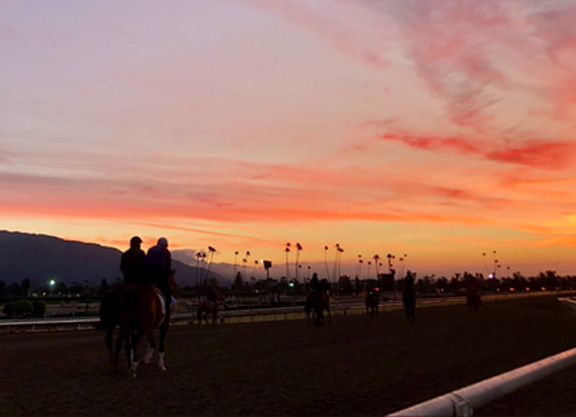By Bill Finley
The Stronach Group dropped a bombshell on the horse racing industry when it announced that, in light of the rash of breakdowns that have occurred since the Santa Anita meet began Dec. 26, they are banning race-day medication at both Santa Anita and its sister track in Northern California, Golden Gate Fields.
While a lengthy press release issued by The Stronach Group Thursday had many details, there were many more that were left out and are crucial to this story. Here's what we still need to know:
—No mention was made about the status of race-day medication at the other Stronach-owned tracks–Gulfstream, Laurel, Pimlico, Portland Meadows and its lone harness track, Rosecroft Raceway. Should The Stronach Group continue to allow medication at those tracks, it is sure to open itself up to intense criticism. How can TSG possibly maintain that race-day medication is dangerous in California, but not in Maryland, Florida or Oregon?
While TSG is to be believed when it says Thursday's decision was all about putting the welfare of the horse first, it also no doubt had a lot to do with appeasing animal rights groups. So how can Belinda Stronach, Tim Ritvo, et al. explain this decision to PETA and other animal activists if horses start breaking down at Laurel or Gulfstream?
“That they made no mention of banning race-day medication at their other tracks shows how disingenuous they are,” said a Southern California trainer who asked not to be identified. “It shows that they really don't believe medication is part of the problem and this is nothing more than a public relations spin.”
—It would seem that TSG almost has to ban the same medications at its other tracks. If so, will the GI Preakness S. be run medication free and might that keep horses out of the race, possibly even GI Kentucky Derby winner?
—The Breeders' Cup issued a statement saying it stood by Santa Anita and would not move the event, which is planned to be held there in 2019. It would be too late to do so anyway. But if a number of important horses don't participate and handle falls, will the Breeders' Cup be inclined to stay away from The Great Race Place in the future?
—Has Santa Anita painted Del Mar and, to a lesser extent, Los Alamitos and the Northern California fairs into a corner? Del Mar was bombarded with negative publicity and had to deal with PETA's wrath in 2014 when 16 horses died during its meet. What is going on now is as much a public relations battle as it is anything else and the very future of the sport may just depend on how track operators respond to the situation. After Santa Anita did what it did, can Del Mar possibly take the chance of allowing race-day medications and then having a meet that includes numerous breakdowns? It would be extremely risky to do so.
—When, exactly does the ban go into effect? No one was saying Thursday. Will race-day medication be allowed or not in the GI Santa Anita Derby and the GI Santa Anita H., both of which will be run Apr. 6? If it is not allowed, will trainers skip the race and instead opt for Kentucky Derby preps and major handicap races where they can use Lasix on their horses?
—Will any trainers be so fed up by TSG's decision that they will leave California? It's not an easy thing to do because California, when it comes to racing, is on an island. Moving to someplace else would be expensive and mean a disruption in what has become one's daily life. But some trainers could find leaving enticing, especially with the type of purses that are offered at places like Oaklawn, NYRA, Churchill and Keeneland.
—Would pro-Lasix owners start taking their horses away from California-based trainers and start shipping them to other jurisdictions where they can use Lasix?
—How, exactly, is Santa Anita planning on putting the ban in place without the permission of the Thoroughbred Owners of California, which is required when it comes to rule changes? Will the TOC sign on? If not, what then? Santa Anita's out may be in how it writes the conditions of its races. There is no rule in California dictating what conditions a racing secretary writes into a race. The racing office would have to write into the conditions of each and every race that horses will not be permitted to run with Lasix, etc.
—How will field sizes be affected? TSG is known for how hard it pushes for full fields because large fields drive betting handle. Many trainers will bellyache that they now can't run their horses without Lasix and, if that's the case, field sizes will fall. However, there is another school of thought: that horses need so much time off between races because they come out of their races badly dehydrated because of Lasix and they cannot recover quickly. Perhaps the Lasix ban will be the beginning of the end of seeing horses average four or five starts a year.
Not a subscriber? Click here to sign up for the daily PDF or alerts.






